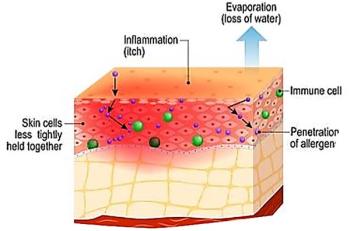
Adolescent Wheeze Could Be Vocal Cord Dysfunction
COLUMBUS, Ohio -- Spirometry can help emergency departments distinguish between the wheezing of acute asthma in adolescents and vocal cord dysfunction, found investigators here.
COLUMBUS, Ohio, Aug. 27 -- Spirometry can help emergency departments distinguish between the wheezing of acute asthma in adolescents and vocal cord dysfunction, found investigators here.
Among 12- to 21-year-olds who arrived at an ED here in acute respiratory distress over a one-year period, 12 of 17 patients who had high-normal oxygen saturation levels had spirometry readings consistent with vocal cord dysfunction rather than asthma, reported Paul K. Nolan, M.D., of Columbus Children's Hospital, and colleagues. Dr. Nolan is now of Texas Tech in Amarillo.
The findings suggest that clinicians should consider vocal dysfunction when evaluating patients with airflow obstruction in the absence of acute asthma exacerbations, the authors wrote in the July issue of Pediatric Pulmonology.
"Both asthma and vocal cord dysfunction are very common, and emergency departments across the country are seeing more and more kids with these kinds of symptoms," said pulmonologist Karen McCoy, M.D., of Columbus Children's, who was not involved in the study. "While they may appear similar to parents, the conditions act differently and must be treated differently."
The authors conducted a prospective one-year study to determine whether spirometry could distinguish between acute asthma exacerbations and other causes of airflow obstruction in adolescents with persistent respiratory distress with room air oxygen saturations of 97% or greater.
They divided spirometry findings into one of four categories:
- Consistent with an acute asthma exacerbation,
- Variable extrathoracic airway obstruction pattern consistent with vocal cord dysfunction,
- A combination of the two findings above, or
- Normal airflow.
Spirometry findings were defined as being asthma exacerbation-negative if the forced expiratory volume in one second (FEV1) was at 65% of predicted or greater, and/or no concavity was seen on the expiratory loop.
A secondary study outcome measure was the presence or absence of a flow volume loop pattern showing truncation of the inspiratory portion consistent with vocal cord dysfunction.
They identified a total of 2,073 adolescents ED visits for asthma over a one-year period. Of these, 20 of the visits by 17 patients met the study criteria of presumed asthma-related respiratory distress, failure to respond to therapies for acute asthma enough to allow discharge home, pulse oximetry values of 97% or greater on room air, identification by the emergency room staff, and the availability of the study personnel, generally from 7 am to 10 pm weekdays.
They found that only five of 20 encounters were classified as airway obstruction consistent with acute asthma exacerbations. In the 15 encounters that were classified as having asthma exacerbation-negative, nine had flow volume loop of evidence of variable extrathoracic airway obstruction consistent with vocal cord dysfunction, and six had normal spirometry.
In addition, they found that three of the five encounters that were ruled positive for asthma exacerbation also had flow volume loop evidence consistent with vocal cord dysfunction.
The difference in the mean percent predicted FEV1 between the asthma-exacerbation-negative and positive groups, at 99.5% + 11.2% vs. 68.2% + 12.5%, respectively groups was statistically significant (P
Newsletter
Enhance your clinical practice with the Patient Care newsletter, offering the latest evidence-based guidelines, diagnostic insights, and treatment strategies for primary care physicians.
















































































































































































































































































